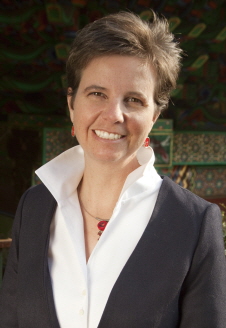
What was striking about this scene was not only the men themselves, but the aura of a living tradition – their clothing and demeanor recalled days gone by and at the same time contrasted markedly to the structure before which they were placed, namely a glass-encased high-rise building with the name Hyundai prominently displayed. There I saw the past standing before, standing against, standing amidst the “modern day.”
I first came to Korea in 1986 and left a year and half later – exactly one year before the Seoul Olympics and all the changes stimulated by that event.
Despite the fact that I was introduced to diverse cultures in my youth, here I encountered a world completely new to me: a place of beauty and disgrace, virtues and turpitudes, solidarity and schisms, serenity and chaos – a world of contrast.
Returning to Korea in 1997 and living here again since 2004 only confirms what I learned long ago: Korean culture is in a continual state of balancing the past with the future, tradition with modern possibilities. Today my interest lies not only in what I see as some of the significant changes that have occurred in Korea in general, but also at Ewha Womans University. Some of the changes in Korea, as well as Ewha, are a balancing act of protecting sometimes fragile traditions from the onslaught of the voracious modernity of the 21st century.
How do you open the door to the world, creating a truly multicultural society, while at the same time maintain a sense of national pride that has served the nation for so long? How do you open the campus to a diverse student body and world-wide recognition, while at the same time maintain the standards that have unified the school?
It is, of course, possible, precisely because we find that Korea and Ewha have always thrived in contrast; if one digs past the inescapable cement surface that blankets modern Korea, we find the rich loam that has always fed the souls of her people, the granite walls that have always supported and protected her, even in times of conflict and political occupation. Here we find the depths of han counterbalanced by the wellspring of jeong, the eum, coexisting in perfect harmony with the yang.
It is such contrasts that will continue to breathe life into Korean culture and into Ewha; both will stand as unique entities while at the same time inviting foreigners to feel more accepted and even integrated into Korean and campus life.
And yet, I believe the best of life and culture and history will not only survive, but will blossom.
Old men in hanboks will continue to talk of the good old days as they squat in front of skyscrapers, Ewha will continue to expand its global reach, and I will continue to be fascinated by a land that long ago became my second home.
*Professor Heather A. Willoughby teaches at Ewha Graduate School of International Studies as an associate professor.
Professor Heather A. Willoughb
evoice@ewha.ac.kr

